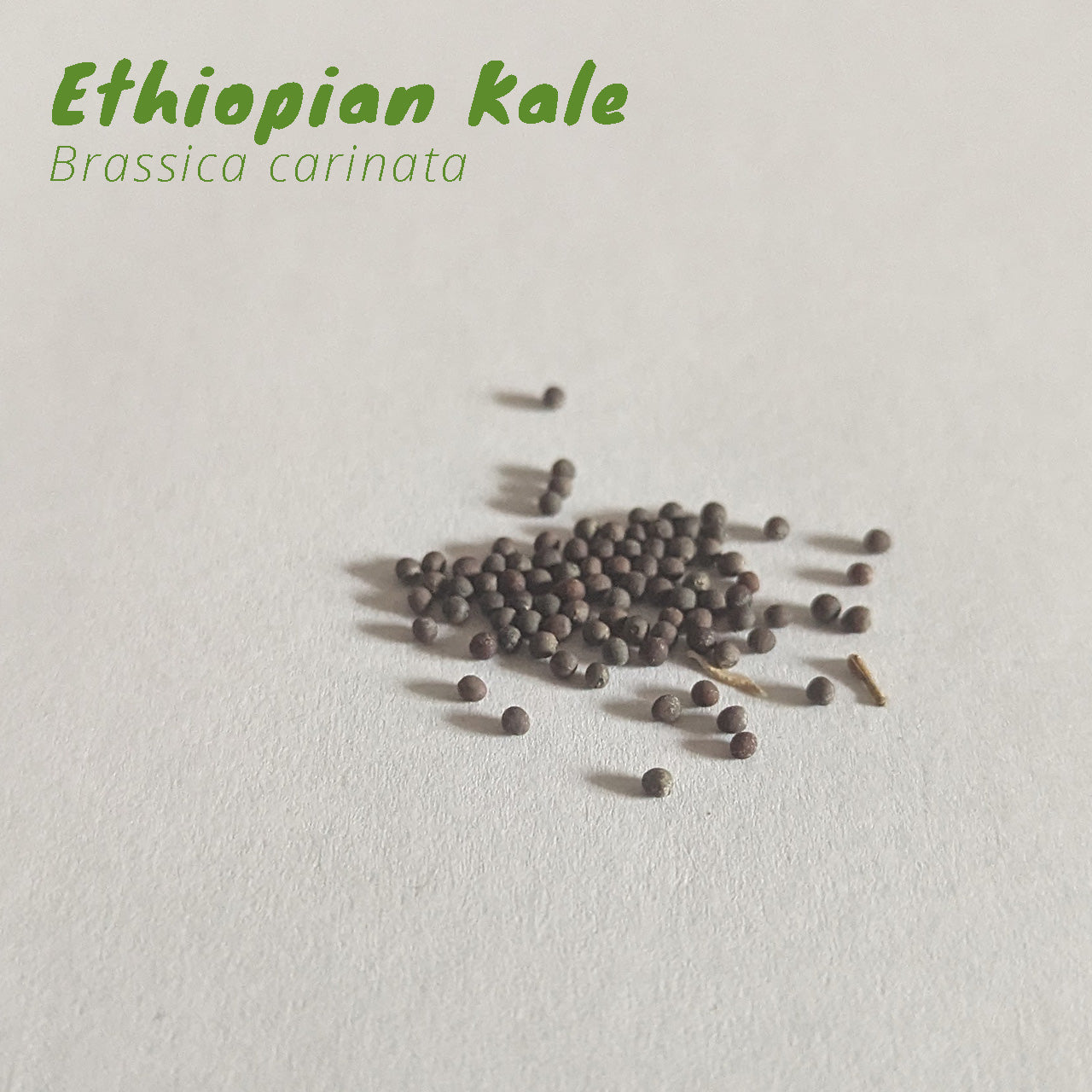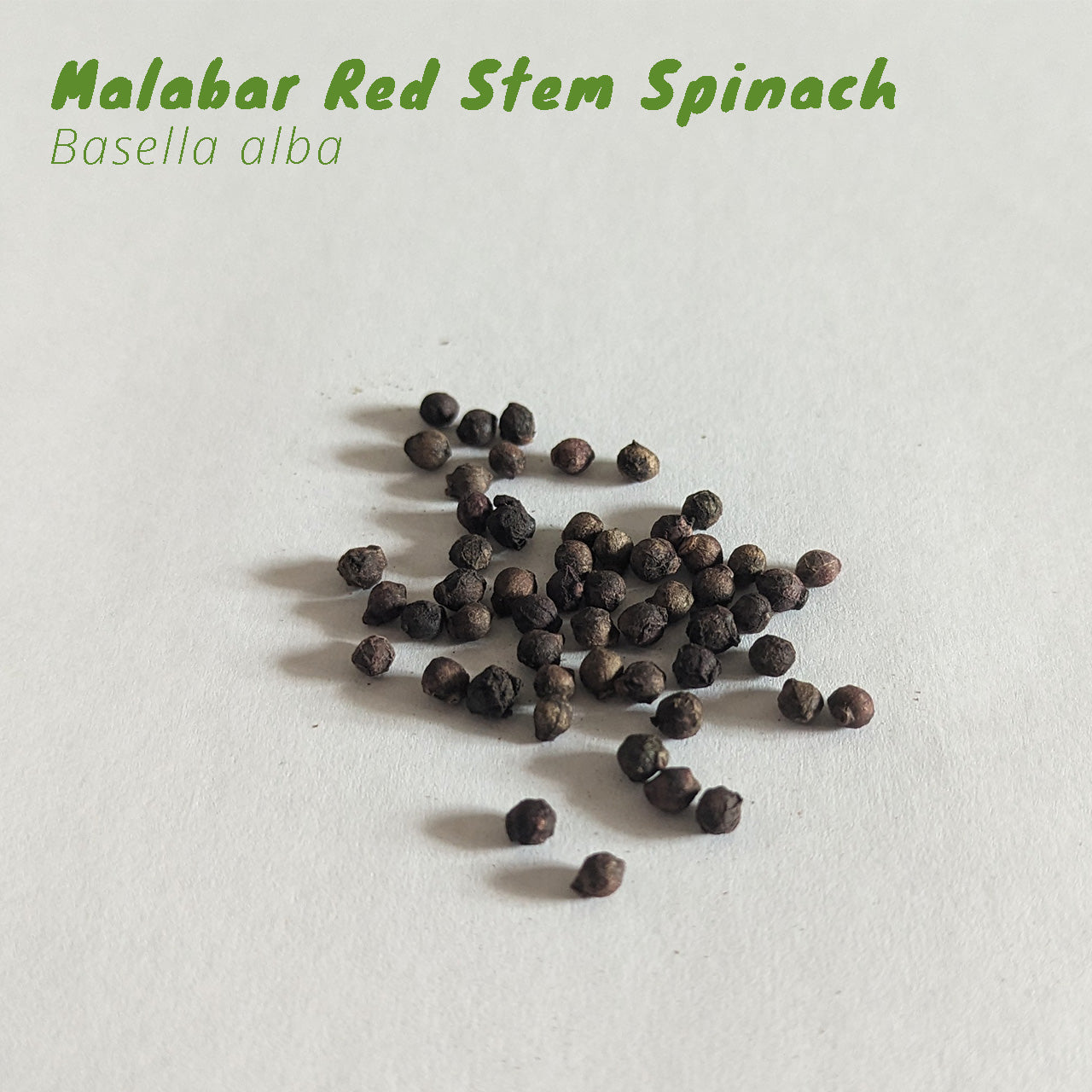Fl Gardening
Florida Summer Leafy Greens Seed Pack
Florida Summer Leafy Greens Seed Pack
Couldn't load pickup availability
5 heat tolerant varieties of leafy greens that will grow in Florida during the Summer
-
Ethiopian Kale (Brassica carinata) - No less than 40 seeds per packet
-
Egyptian Spinach (Corchorus olitorius) - No less than 40 seeds per packet
-
Malabar Red Stem Spinach (Basella alba) - No less than 30 seeds per packet
-
New Zealand Spinach (Tetragonia tetragonioides) - No less than 25 seeds per packet
-
Perpetual chard (Beta vulgaris subsp. cicla) - No less than 30 seeds per packet
Heat-Tolerant Leafy Greens That Will Grow During The Summer In Florida!
Despite popular opinion, you can actually grow leafy greens in the Florida heat. You need to think outside of the box a bit though. You can not grow your traditional spinach or butter crunch lettuce in the heat of summer but you can grow many fantastic alternatives that are widely grown in other tropical to sub-tropical parts of the world.
Ethiopian Kale (Brassica carinata)

Sometimes known as Ethiopian Mustard, African Kale, or Texsel Greens in the US. This plant is known as Habesha Gomen back in Ethiopia. Brassica carinata.
Ethiopian Kale is a heat-tolerant green with a mild, sweet profile that includes a subtle mustard kick. It’s known for its complex flavors, which some describe as a blend of garlic and spice, while others pick up a distinct nutty taste.
I really like the way this plant looks in the garden. It grows upright and it is a lovely shade of green. The leaves are both rich in color but delicate looking at the same time.
Ethiopian Kale will flower and go to seed the first year it is grown. The flowers are small, yellow, and easily blown around. They attract plenty of pollinators to the garden and add some nice movement to the space as well.
No less than 40 seeds per packet
Egyptian Spinach (Corchorus olitorius)
Egyptian Spinach, also known as 'Molokhia.' This plant loves the Florida heat and is super easy to grow. While other greens might give up in the summer, Egyptian Spinach keeps on growing strong, giving you lots of leaves to use in soups, stews, and salads.
This plant grows tall and straight with long, skinny leaves that are bright green and shiny. It makes your garden look great and adds a fresh, slightly earthy flavor to your food—kind of like spinach mixed with kale.
It’s full of vitamins and good for your health, making it a top pick for gardeners who like to eat what they grow. Plus, it doesn’t get sick easily and bugs don’t bother it much, so it’s a tough plant that keeps on giving.
No less than 40 seeds per packet
Malabar Red Stem Spinach (Basella alba)
 By Dpradeepkumar - Own work, CC BY-SA 4.0, https://commons.wikimedia.org/w/index.php?curid=92053865
By Dpradeepkumar - Own work, CC BY-SA 4.0, https://commons.wikimedia.org/w/index.php?curid=92053865
Malabar Spinach brings a unique twist to your garden and your kitchen with its mild, slightly peppery flavor that's touched with a hint of citrus. In its raw form, the leaves are thick, juicy, and crisp, offering an earthy taste. When cooked, it transforms to resemble regular spinach in taste and appearance but holds up better without wilting as quickly.
Some people say the cooked texture of Malabar Spinach, is rich, almost meat-like.
Malabar Red Stem Spinach is a vining plant that brings a splash of color to your garden. The edible leaves are a deep green color that grow on stems that are purple-ish red and the two colors contrast nicely.
The leaves of Malabar spinach are large and round. They grow between 2 - 4 inches in length and have easy-to-see red veins in the leaves.
Malabar Spinach climbs up trellises, fences, or any support you provide, making it a great pick for saving space and adding a bit of vertical flair to your garden. Its leaves are thick and glossy, with a deep green color.
Not only is it beautiful and delicious, but it's also tough. It grows well in the hot months when many other greens might struggle.
No less than 30 seeds per packet
New Zealand Spinach (Tetragonia tetragonioides)

By Leonora (Ellie) Enking - Own work, CC BY-SA 4.0 https://www.flickr.com/photos/33037982@N04/10426207745
New Zealand Spinach has a slightly crunchy texture with thick, triangular leaves that are soft and a bit juicy. It grows low to the ground and spreads out, making it an excellent ground cover that can help keep weeds away. The leaves are a deep green and stay tender, which makes them perfect for fresh salads or a quick sauté.
New Zealand Spinach is perfect for Florida gardens because it loves the heat and can handle dry conditions.
It is actually native to coastal regions of Australia and New Zealand but it is also grown in Brazil, Costa Rica, and other parts of the tropical Americas.
No less than 25 seeds per packet
Perpetual chard (Beta vulgaris subsp. cicla)
A great alternative to spinach. I find traditional spinach to be a bit fussy in Florida. Perpetual chard is actually in the same family as chard and beets. When looking at the plant I feel like you can definitely see that but the leaves resemble spinach just a bit as well.
It’s kind of like Swiss chard and spinach had a baby. The flavor is described as spinach-like but not as earthy.
The stems are not as thick as Swiss chard and they are also a more pale green color.
This plant is part of the same family as chard and beets. But it actually tastes more like spinach than anything else. The leaves also kind of look like spinach, flatter and more pointed than chard leaves, with thinner stems.
No less than 30 seeds per packet
How To Grow Leafy Greens In The Summer In Florida
It starts with choosing the right varieties! Like the ones we just talked about :)
Knowing the best varieties that can withstand the Florida summer really is the key to growing leafy greens in the hot and humid summer.
So now that choosing our varieties is checked off the list, let's talk about how to start these seeds.
You have two options for planting: direct sowing into the garden or starting them as transplants in a protected area. I prefer the transplant method because it lets you control the environment better, ensuring the seeds stay moist.
When you’re starting from seeds, keeping them moist is key. This can be tricky in the summer because the heat dries out the soil fast. To avoid this, I highly recommend setting up a drip irrigation system to automate your watering. Trust me, it’s a game-changer—especially if you're like me and sometimes forget to water the plants!
Our garden is set up on a simple drip irrigation system connected to a digital timer at the hose bibb and I'm currently building an automated seed starting station that uses soil blocks and a hydroponic-inspired watering setup.
But if you don't have the space or time to set that up, at the very least set an alarm on your phone or put a daily notification on your calendar to remind you to go out and water your plants.
If you are starting seeds as transplants, use a light and fluffy soil. You can choose to buy a seed-starting mix or sift your own garden soil to remove any large chunks. We want the seeds roots and leaves to have an easy time navigating through the soil. Large debris makes it more difficult for our young seedlings.
After the seedlings are about 6 weeks old, it is time to harden them off and plant them into the garden. I have found that growing seeds in soil blocks really reduces transplant shock.
When choosing a spot for your young seedlings be mindful of the position of the sun. It's also helpful to know your yard well. At the peak of summer where are the sunny and shady spots in your garden? They are different than the spring and fall garden!
Florida's summer sun is quite strong so our leafy greens will benefit from a bit of shade. Most of these greens will thrive in 4-6 hours of direct sun. Sun/Partial Shade.
When To Plant Heat-Tolerant Leafy Greens In Florida
These topical to subtropical plants will thrive in Florida's warm and humid summers.
| Leafy Green | North | Central | South |
| Ethiopian Kale | Year-round | Year-Round | Year-Round |
| Egyptian Spinach | April-May | Mar-Jun | Feb-Jun |
| Malabar Spinach | Apr-May | Mar-Jun | Feb-Jun |
| New Zealand Spinach | Apr-May & Aug-Sept |
Mar-May & Sept |
Feb-Apr & Sept-Oct |
| Perpetual Chard | Jan-Apr & Sept-Dec | Feb-Apr & Oct-Dec | Feb-Mar & Oct-Dec |
You may also notice that a few of these leafy greens will grow well in our fall planting season as well which is a nice bonus :)
Fertilizing And Care For Warm Weather Leafy Greens
Watering is crucial. Since these plants are tropical and subtropical, they love water! Again, an automated drip irrigation system is your best friend here to ensure your plants are happy and hydrated.
While these plants are generally low-maintenance when it comes to pests, keep an eye out for aphids, leaf miners, and slugs.
When fertilizing, look for a mix with high nitrogen content—that’s the first number in the NPK values on the fertilizer bag. Nitrogen is particularly good for boosting the growth of leafy greens. A good organic fertilizer that is great for leafy greens is the Down To Earth brand Bat Guano (7-3-1)
Now, Get you some seeds and start growing leafy greens in the heat of summer in Florida :)
Share












